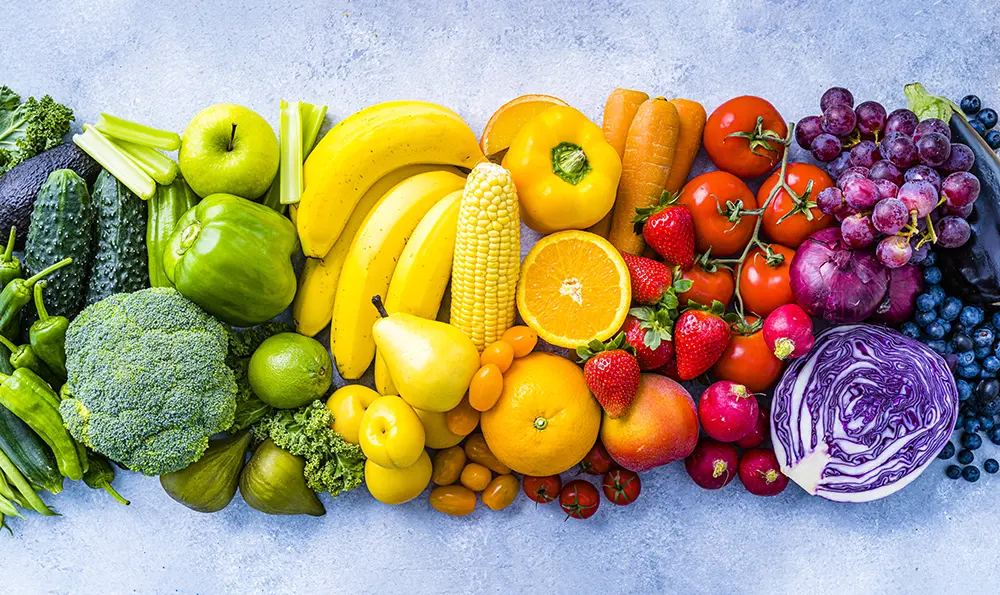Health & Wellness

Let’s kick off spring by bringing a rainbow of colors into your foods! The natural phytochemicals found in colorful fruits and vegetables offer a wide variety of health benefits. Not only do these phytochemicals provide distinct flavors and aromas, but they also promote wellness!
Let’s see what eating a rainbow can do for you.
Red fruits and vegetables – Increase heart health, reduce the risk of prostate and breast cancer, help prevent strokes, and boost brain function.
Orange/yellow fruits and vegetables – Lower the risk of heart disease and inflammation, strengthen the immune system, and help build healthy skin and improve vision.
Green fruits and vegetables – May help prevent cancer. Typically, these foods are high in vitamin K, potassium, fiber and antioxidants.
White/brown fruits and vegetables – Have anti-tumor properties. They also can reduce cholesterol and blood pressure, improve bone strength, and decrease the risk of stomach cancer.
Blue/purple fruits and vegetables – Are associated with improved brain health and memory. They also help lower blood pressure and reduce the risk of stroke and heart disease. The great thing about eating the rainbow is it’s easy to implement.
To eat the rainbow, try to incorporate two to three different-colored fruits or vegetables at every meal and at least one at every snack. While you don’t have to eat every single color every day, try to get them into your diet a few times per week. Here are some ideas:
Breakfast
- an omelet with spinach, mushrooms, and orange bell peppers
- a smoothie with mango, banana, and dragonfruit
- a Greek yogurt bowl with blueberries, kiwi, and strawberries
- a breakfast egg sandwich with tomato, leafy greens, and avocado
Lunch or dinner
- a mixed salad with green cabbage, lettuce, apple, shredded carrots, red pepper, cucumbers, and cherry tomatoes paired with a protein source (e.g., kidney beans, chickpeas, grilled chicken, salmon)
- chicken with roasted sweet potatoes, Brussels sprouts, and garlic
- homemade soup with canned tomatoes, onion, garlic, chopped carrots, white potatoes or parsnip, and kale
- a goat cheese salad with pickled beets, arugula, avocado, and pecans
- spaghetti with tomato sauce, mushrooms, and zucchini
Snacks
- an apple with peanut butter
- red pepper slices with hummus
- grapes and cheese
- a green smoothie or juice
- a banana
- blueberries and yogurt
- broccoli, carrots, and dip
- dried mango slices
- edamame pods
- celery and melted cheese
The opportunities to include fruits and vegetables in your diet are endless. If you live in an area without fresh produce year-round, try purchasing frozen fruits and vegetables for some meals. They’re equally nutritious, accessible, and affordable.



